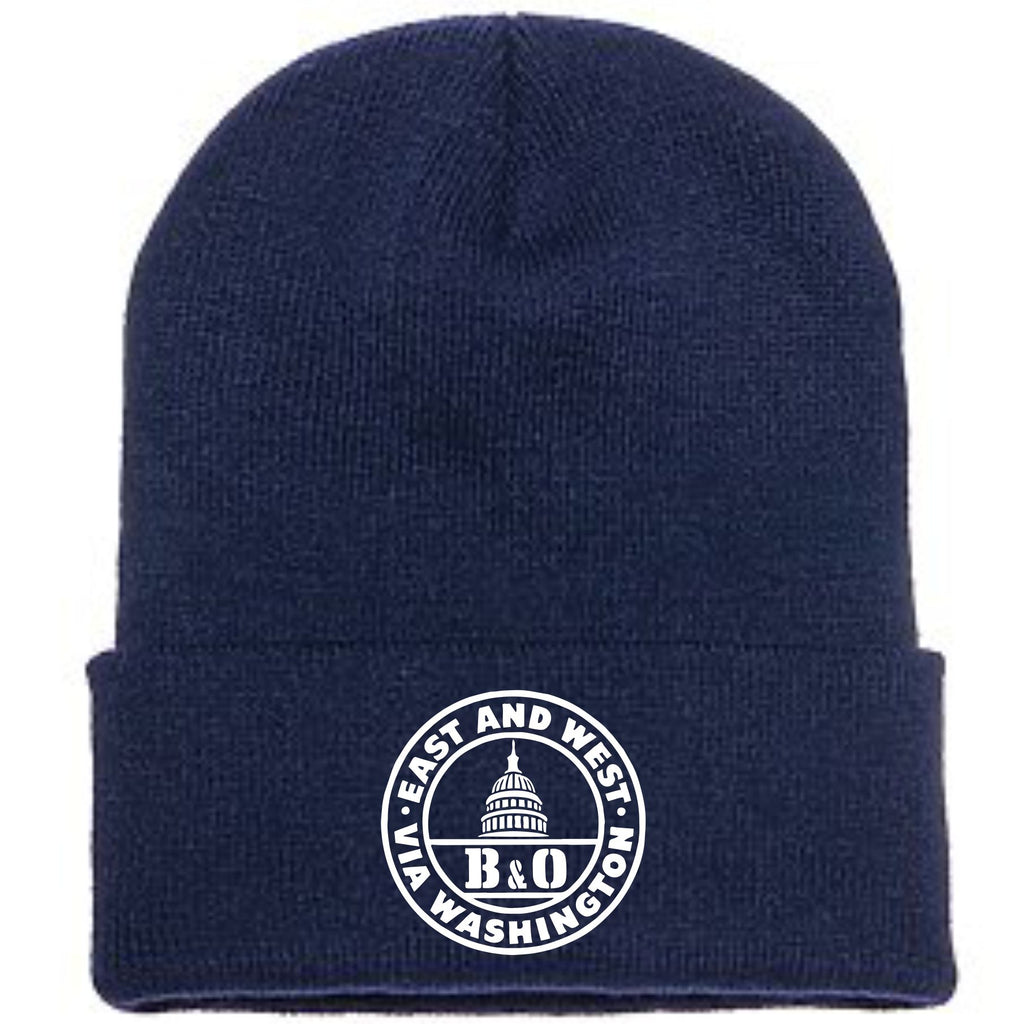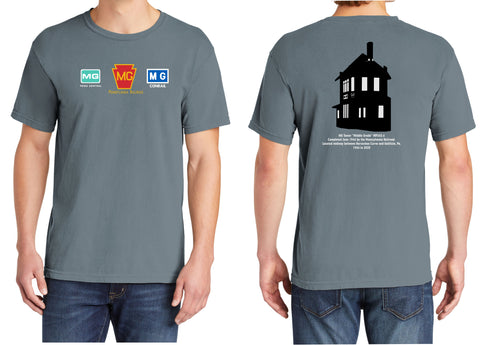
Baltimore and Ohio "East West" Logo Embroidered Toboggan
Baltimore and Ohio "East West" Logo Embroidered Toboggan
- Yupoong Cuffed Knit Cap
- 100% acrylic, hypoallergenic
- 12" knit
- Color Navy
The Baltimore and Ohio Railroad (reporting marks B&O, BO) was the first common carrier railroad and the oldest railroad in the United States, with its first section opening in 1830. Merchants from the city of Baltimore, which had benefitted to some extent from the construction of the National Road early in the century, wanted to continue to compete for trade with trans-Appalachian settlers with the newly constructed Erie Canal (which served New York City), another canal being proposed by Pennsylvania (which would have connected Philadelphia and Pittsburgh), the Chesapeake and Ohio Canal (which connected to the nation's capital, Washington, D.C.), and the James River Canal, which directed traffic toward Richmond and Norfolk, Virginia. At first the B&O was located entirely in the state of Maryland, its original line extending from the port of Baltimore west to Sandy Hook.
Because of competition with the C&O canal for trade with coal fields in western Maryland, it could not use the C&O right of way. Thus, to continue westward while minimizing high-cost track through the Appalachian Mountains, the B&O chose to cross the Potomac River into Virginia (now West Virginia), near the confluence of the Potomac and Shenandoah rivers. From there track continued through Virginia from Harpers Ferry to a point just west of the junction of Patterson Creek and the North Branch Potomac River, where it crossed back into Maryland to reach Cumberland, the terminus of the National Road. From there the B&O extended to the Ohio River at Wheeling and a few years later also to Parkersburg, West Virginia (below rapids which made navigation difficult during parts of the year). It proved crucial to Union success during the American Civil War, although the conflict also caused considerable damage (and repair costs). After the war's end, the B&O consolidated several feeder lines in Virginia and West Virginia, as well as expanded westward into Ohio (including a junction at Portsmouth), Indiana and Illinois. B&O advertising later carried the motto: "Linking 13 Great States with the Nation."
After several mergers, the B&O became part of the CSX Transportation (CSX) network. The B&O also includes the Leiper Railroad, the first permanent horse-drawn railroad in the U.S. At the end of 1970, the B&O operated 5,552 miles of road and 10,449 miles of track, not including the Staten Island Rapid Transit (SIRT) or the Reading and its subsidiaries. It includes the oldest operational railroad bridge in the United States.
When CSX established the B&O Railroad Museum as a separate entity from the corporation, it donated some of the former B&O Mount Clare Shops in Baltimore, including the Mt. Clare roundhouse, to the museum, while selling the rest of the property. The B&O Warehouse at the Camden Yards rail junction in Baltimore now dominates the view over the right-field wall at the Baltimore Orioles' current home, Oriole Park at Camden Yards.
Part of the B&O Railroad's immortality has come from being one of the four featured railroads on the U.S. version of the board game Monopoly; it is the only railroad on the board that did not directly serve Atlantic City, New Jersey.
*Image is a representation and may not be exact




